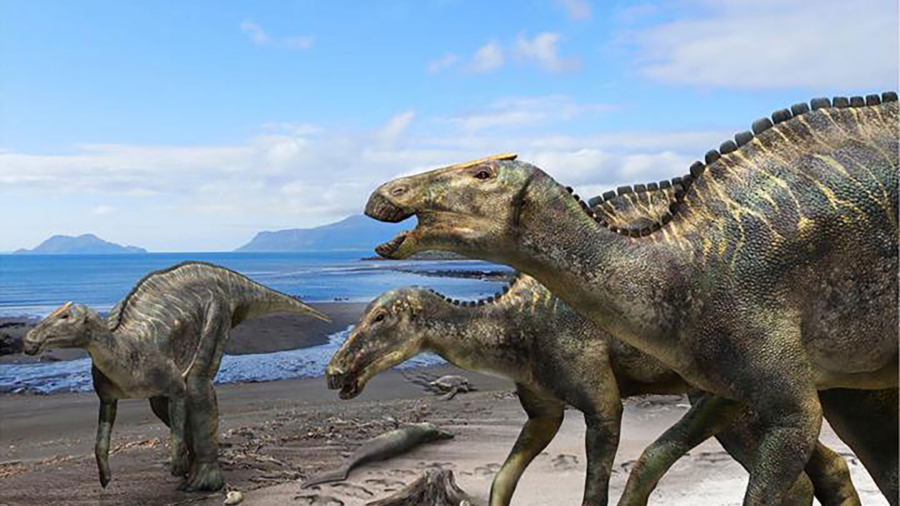A new kind of duck-billed dinosaur has been discovered in Japan.
The largest dinosaur skeleton ever found in the country was hiding underneath 72 million-year-old marine deposits in the town of Mukawa, according to Hokkaido University.
First, part of the dinosaur’s tail was discovered during a joint excavation carried out by the Hobetsu Museum and Hokkaido University Museum in 2013.
Subsequent excavations unearthed a nearly complete dinosaur skeleton, described in a study published in Scientific Reports. It belongs to a new genus and species of a herbivorous hadrosaurid dinosaur, the university said in a news release.
Scientists named the dinosaur “Kamuysaurus japonicus.” The name comes from “kamuy,” the word for diety in Ainu, the language of the indigenous people of northern Japan; “saurus,” meaning reptile in Latin; and “japonicus” for Japan.
How the Dinosaur Might Have Looked When it was Alive
A group of researchers led by Yoshitsugu Kobayashi from the Hokkaido University Museum analyzed the skeletal bones.
The dinosaur found was most likely an adult, according to the research team’s histological study.
It was about 8 meters long and weighed either 4 or 5.3 tons, depending on if it walked on two or four legs respectively. That’s around the weight of an Asian elephant.
The frontal bone of its skull had a long anterior platform for the nasofrontal sutural surface, meaning the dinosaur had what some might call a duckbill.
The team discovered this dinosaur has three characteristics that aren’t shared with other biologically similar dinosaurs: the low position of the cranial bone notch, the short ascending process of the jaw bone and the anterior inclination of the neural spines of the sixth to twelfth dorsal vertebrae.
What They Learned From This Discovery
Scientists are interested in what the Kamuysaurus japonicus can tell us about its clade, a taxonomic grouping of organisms with a common ancestor—its branch on the tree of life, so to speak.
The latest common ancestors of the dinosaurs in the Edmontosaurini clade were spread across both Asia and North America. At the time, they were connected by what is present-day Alaska, which allowed them to travel back and forth between the two continents.
The group’s research also suggests that the dinosaur’s ancestors preferred to inhabit areas near the ocean.
![]()


